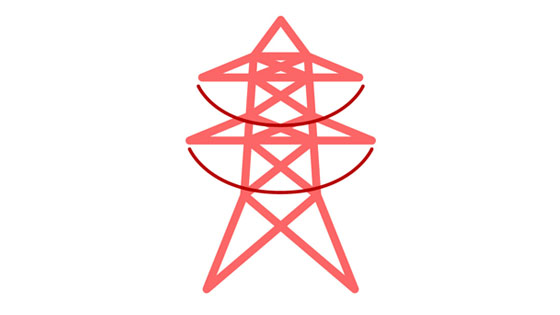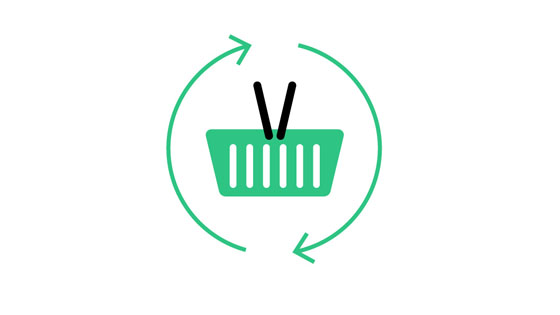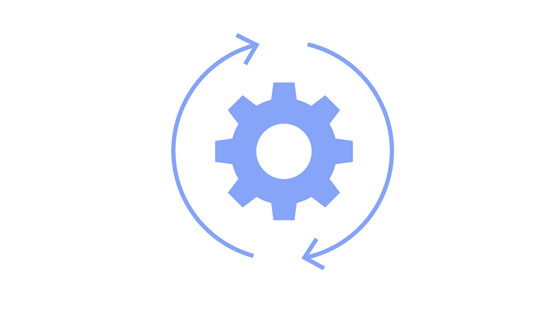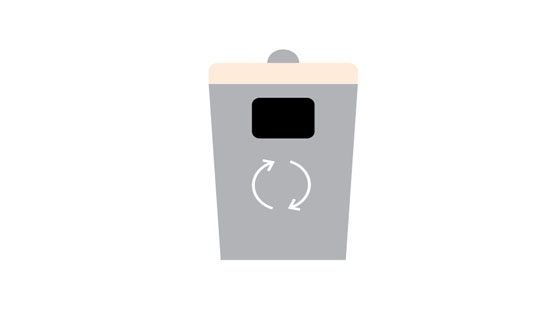Climate Accounts
UiO aims to halve greenhouse gas emissions by 2030. Take a look at how we are progressing within different categories.
Our goals for 2030

Travel
50% cuts in emissions from business trips

Energy consumption
30% lower energy use on campus

Buildings
Sustainable maintenance and climate friendly construction

Goods
Lower, more sustainable consumption
UiO uses 2018 as a reference year.

Services
Lower, more sustainable consumption

Waste
Waste less, recycle more
Our progress 2018–2030
The climate accounts are a helpful tool to identify which of our activities contribute the most to carbon emissions. This helps us implement the most effective measures possible to reduce our emissions. The overview shows which categories have the highest emissions and how we are progressing towards our goals of reduction.
Total emissions

This graph shows the total greenhouse gas emissions at UiO from 2018 to 2023. The goal of halving emissions by 2030 is marked by a dotted line.
In 2023, we reduced our emissions by 18 percent compared to 2018.
Travel

UiO aims to halve carbon emissions from business trips from 2018 to 2030. This includes trips made by our employees for conferences, fieldwork, and other international collaborations. The dotted line indicates the goal. This graph only shows the emissions associated with air travel, which makes up 92 percent of the category "transport and travel".
Although emissions from air travel have decreased by 31 percent in 2023 compared to the reference year of 2018, the trend is heading in the wrong direction. The graph illustrates that emissions related to air travel have been on the rise since 2021. From 2022 to 2023, emissions increased by approximately five percent. An increase in the volume of intercontinental and European flights was the primary contributor to emissions in this category.
Energy consumption

Energy consumption represents the emissions associated with purchased electricity and district heating. UiO aims to reduce energy consumption on campus by 30 percent by 2030. This is indicated by the dotted line on the graph.
Energy consumption accounted for approximately 29 percent of our total emissions in 2023. Compared to 2018 numbers, we have reduced our emissions by 16 percent. However, due to the cold winter in 2023, energy consumption went up, and emissions increased by four percent compared to 2022.
Buildings

The buildings category encompasses carbon emissions related to investments, renovations, leasing of properties, repairs, maintenance of buildings, waste management, and cleaning. Buildings accounted for 12 percent of our carbon emissions in 2023.
Compared to 2018, we reduced emissions in this category by 22 percent in 2023. The significant reduction relative to the 2022 level is mainly due to the fact that no new large construction projects were initiated in 2023. Additionally, a change has been made in the tool Klimakost, to account for the increase in construction material prices.
Waste

The waste category shows the carbon emissions for all waste generated by UiO, where cardboard and paper, residual waste, and medical waste are the largest contributors. UiO aims to waste less and recycle more. In 2023, waste accounted for one percent of our total carbon emissions.
Although the emissions associated to waste was reduced by 46 percent compared to 2018, we see a slight increase in this category when compared to 2022-levels at approximately eight percent. This is mainly due to an increase in residual waste.
Services

The services category consists of expenses related to research and lab services, consulting services, software, and subscriptions. Overall, this category accounts for eight percent of our carbon emissions in 2023.
In 2023, the emissions from this category were six percent lower than in 2022.
Goods

The goods category refer to emissions from all goods procured at UiO, excluding those associated with construction. The largest contributors to emissions in this category include office and IT equipment, machinery, research materials, and copy paper.
In 2023, emissions increased by 5 percent compared to the previous year. Since 2021, emissions in this category have risen, and goods purchased by UiO accounted for a full 30 percent of UiO's total emissions in 2023
Sources of emissions in 2023

Sources of greenhouse gas emissions per category at UiO in 2023:
- Goods: 30 percent
- Energy consumption: 29 percent
- Travel: 20 percent
- Buildings: 12 percent
- Services: 8 percent
- Waste: 1 percent
- Direct emissions: below 0 percent
The diagram displays approximate values, with amounts rounded to the nearest whole percentage.
Methodology
About the methodology
The UiO climate accounts are made with the help of Klimakost, a tool made to measure greenhouse gas emissions for organisations. The goal is to give an overview of what areas contribute most to our carbon footprint?– thus being able to measure the progress towards the goals we have set.
The methodology utilises calculations of accounting data multiplied by emissions factors, which are indirect emissions rather than measured direct emissions. This methodology is the same as the one used by the Norwegian Environment Agency when compiling Norway's National Greenhouse Accounts in accordance with the guidelines from the UN Intergovernmental Panel on Climate Change.?Klimakost is also used by the City of Oslo and other universities.
Klimakost is still under development, but it is the best-developed tool we have access to at the moment in the higher education sector in Norway. Emission factors for the categories "goods" and "services" were updated and adjusted in Klimakost starting from 2021. As a result, these categories are not directly comparable to the 2018 levels.
We are continually working to collect more accurate data on UiO's emissions to obtain a more precise picture of our total emissions. Among other initiatives, we aim to have suppliers provide the direct emissions for their products and services instead of relying on conversions from financial data. This approach was adopted when UiO signed a new catering agreement in September 2023. Physical data from our catering purchases will be incorporated into the climate accounts for 2024.
About travel
Due to methodological changes in the reporting done by Klimakost, the emission figures for work-related travel in 2023 are not directly comparable to data from 2018. The 2023 report includes work-related travel booked outside of UiO's travel portal, which was not the case for the 2018 report.
UiO has adjusted the figures for air travel in 2018 accordingly, assuming that the percentage of bookings outside the travel portal is as high as it was in 2023. By doing so, a more accurate basis for comparison between these two years is ensured, thereby providing a better understanding of our progress towards the target of a 50 percent reduction compared to 2018. The recalculation has been entered into Klimakost to ensure that the updated figures are included in the annual greenhouse gas accounts.
Previous reports
Klimagassregnskap 2018 (pdf, 1003 kb)
Klimagassregnskap 2019 (pdf, 1017 kb)
Klimagassregnskap 2020 (pdf, 1298 kb)
Klimagassregnskap 2021 (pdf, 1111 kb)
Klimagassregnskap 2022 (pdf, 804 kb)
Read the report for the climate accounts in 2023 (pdf, 1200 kb)